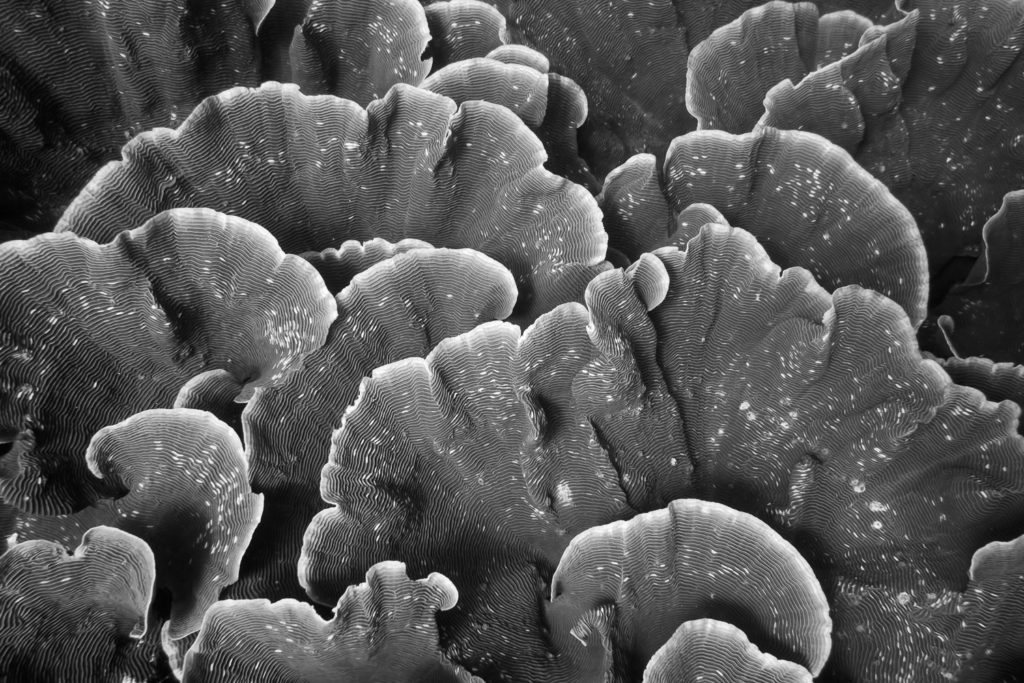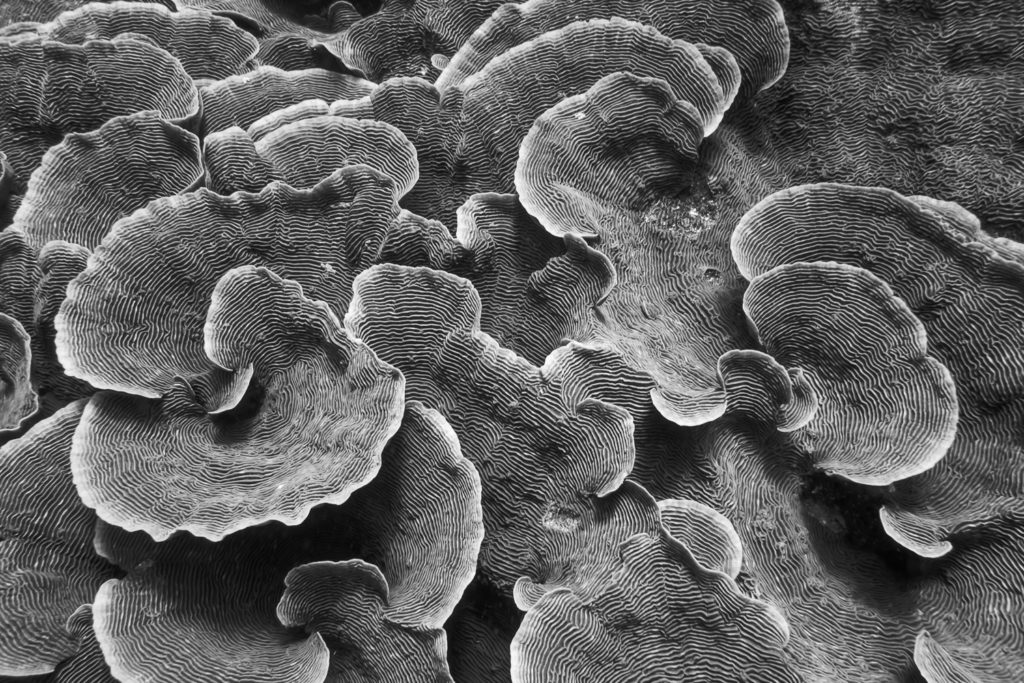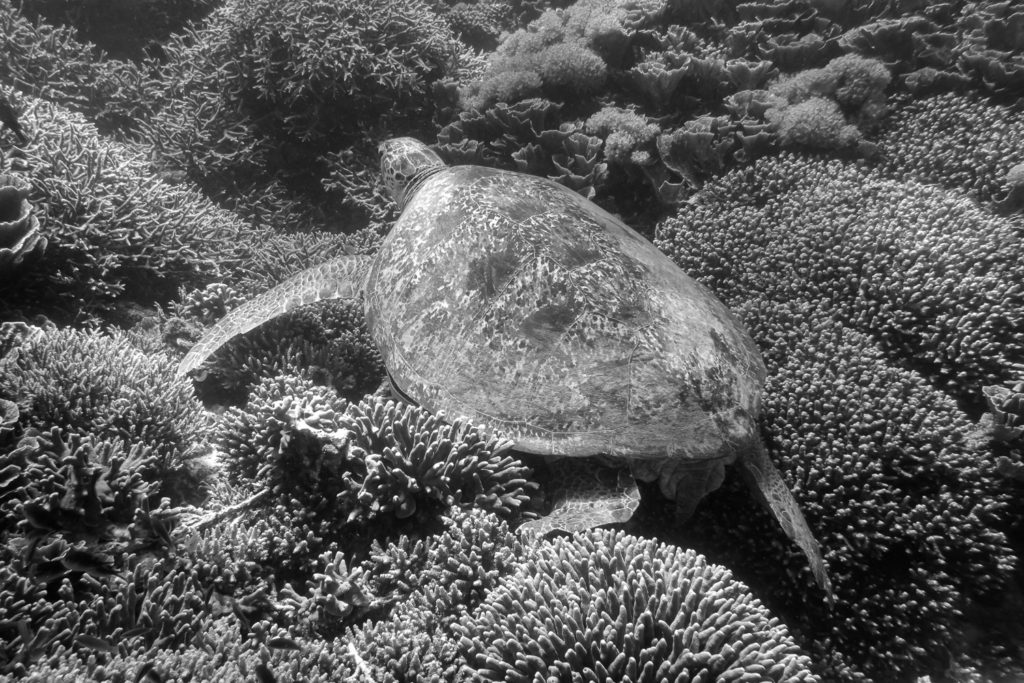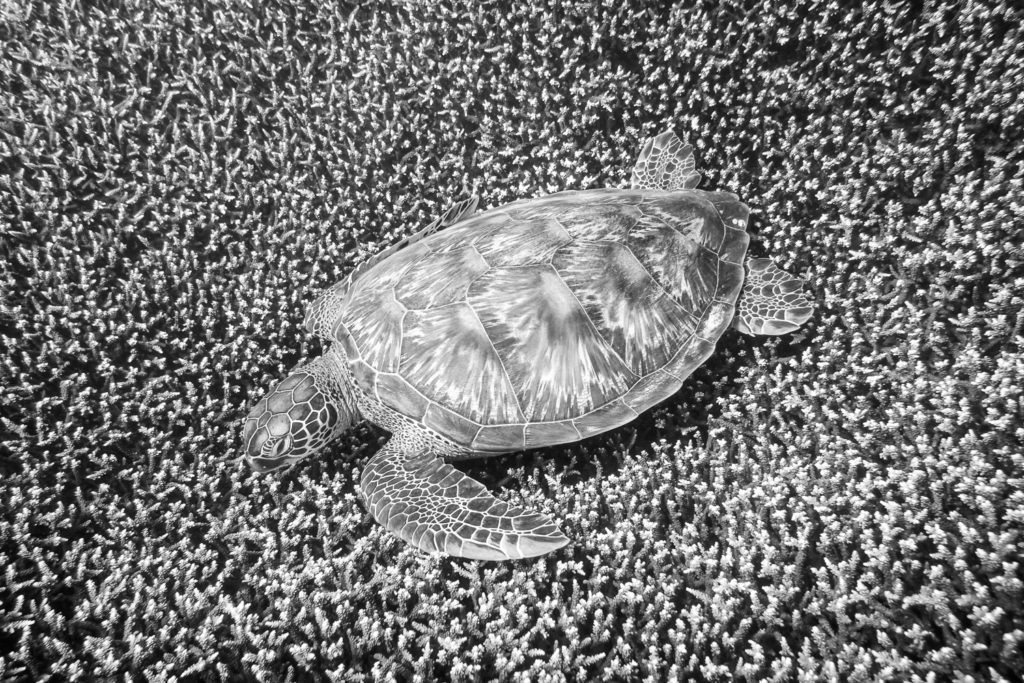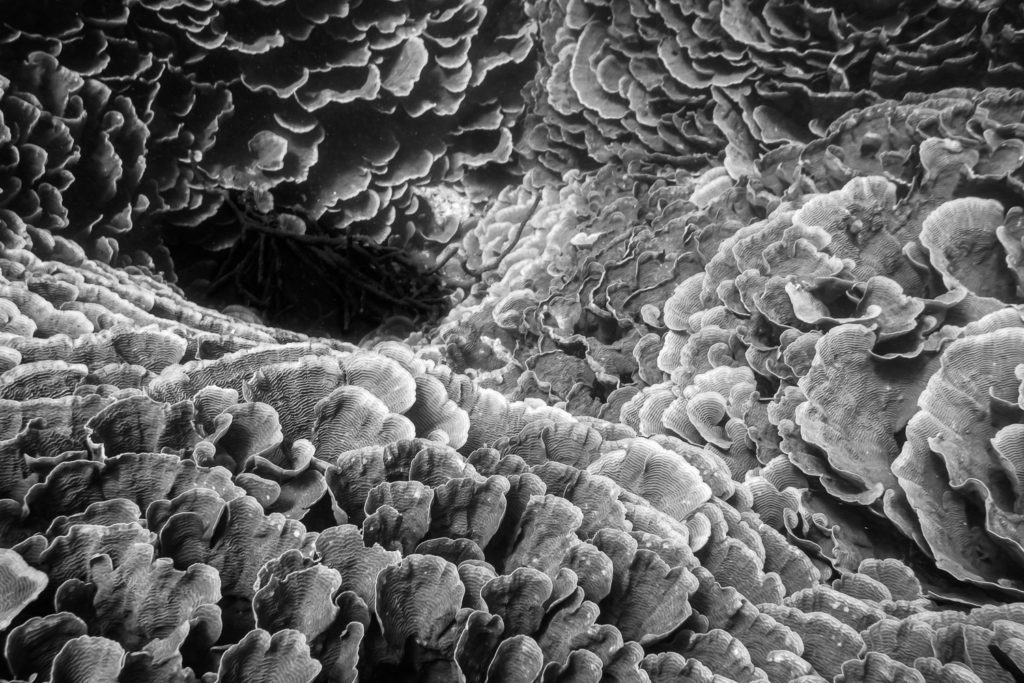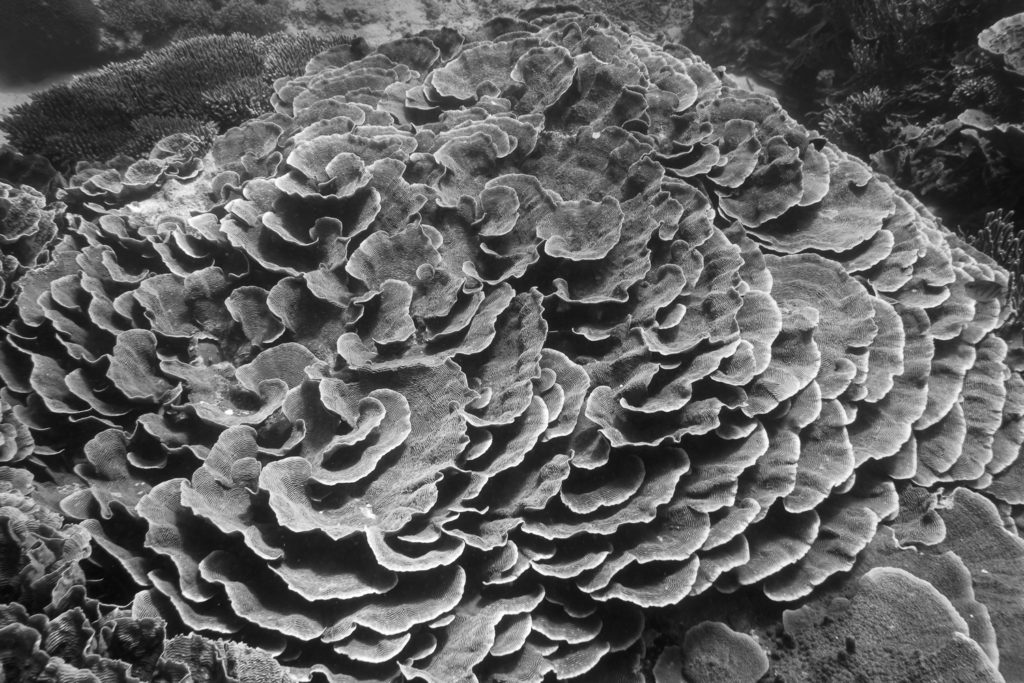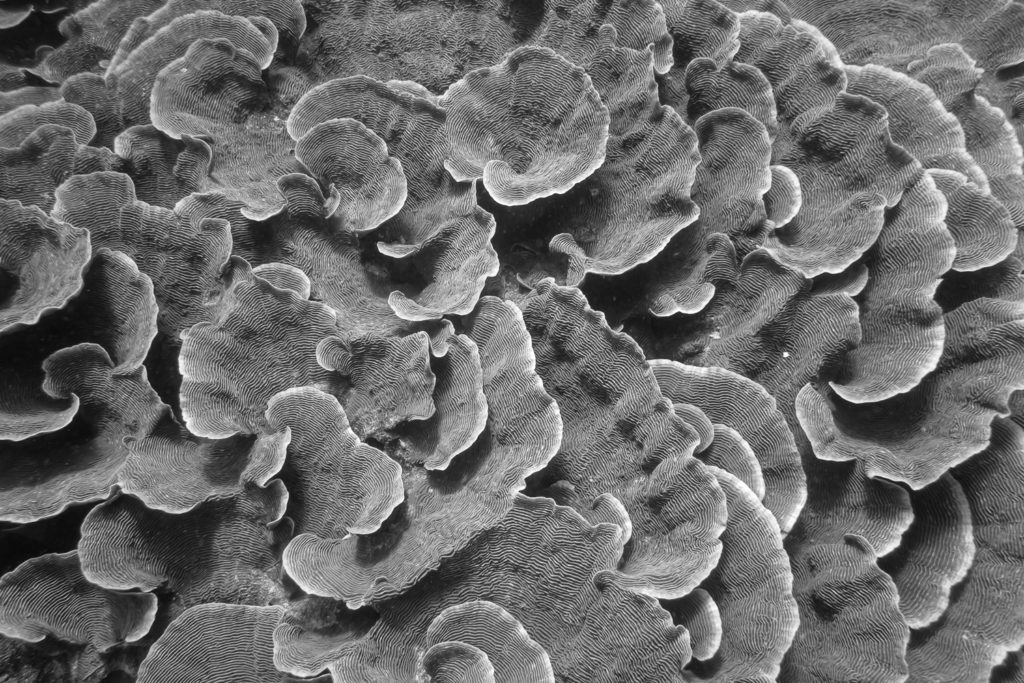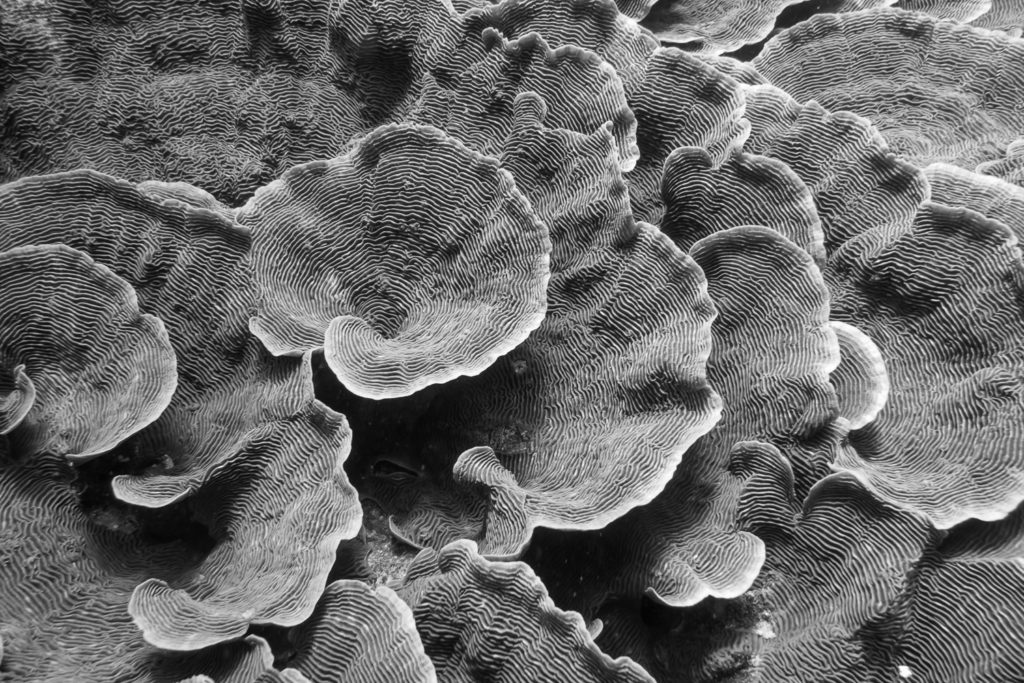Komodo – Siaba Besar in B&W
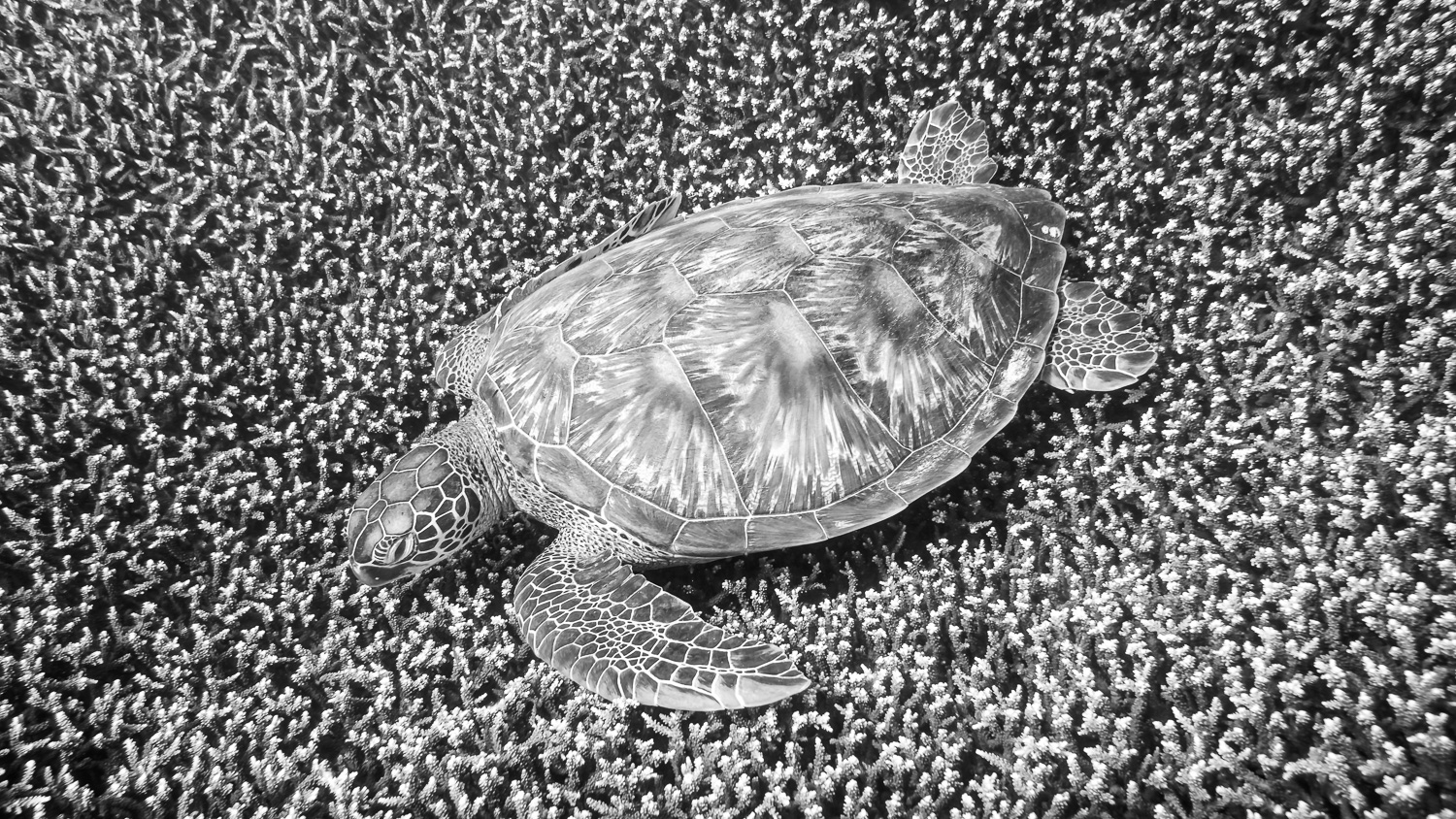
On the west side of Siaba Besar island in Komodo National Park there’s a dive site that has a sandy bay and a big reef formation extending up from the deeper adjacent channel. Green sea turtles abound at this site, and it’s easy to spot them as they lie sleepily in the beds of branching corals or make swims to the surface to fill their lungs with fresh air. A day on the dive boat often starts out with a dive at Siaba Besar because it’s a relaxed dive with the high likelihood of seeing turtles. Tibo and Lesley and I spent several dives surveying the site in order to create a dive map of it as part of our divemaster training. This wasn’t easy, and there was much discussion on how to precisely locate its various features, including the “sandy bridge”, “turtle city”, and that “leaf fish hide-out” spot!
In this post I’m sharing black and white photos of some of the corals at Siaba Besar, including several photos that show turtles lounging on them. Underwater my eye is often drawn to the corals, more than to the fish – I think for others the opposite might be the case. The shapes, patterns, and textures of the corals, and the topography of a large sloping reef, are visually fascinating for me. I chose to use B&W for these photos because it emphasizes the corals’ textures and forms, and the way the forms catch light and cast shadows. (Unless you use a strobe, or a filter to artificially add color back in, underwater color photos are pretty monochrome anyway, even at fairly shallow depths.) In the photos with turtles, B&W also shows how the patterns on the turtle shells have a bit of camouflaging effect.
Siaba Besar has an abundance of a particular type of coral that grows in leafy forms, similar to lettuce. These are foliose corals, and large slopes and mounds of these corals give the site a unique and beautiful feel. One type has fine ridges along its leaves, like corduroy, with interesting markings that look like some type of code. Where different types of corals merge together, the border of one type often gives way gracefully to the next – several of the photos show these interesting patterns, some with a kind of abstract look that I love.
